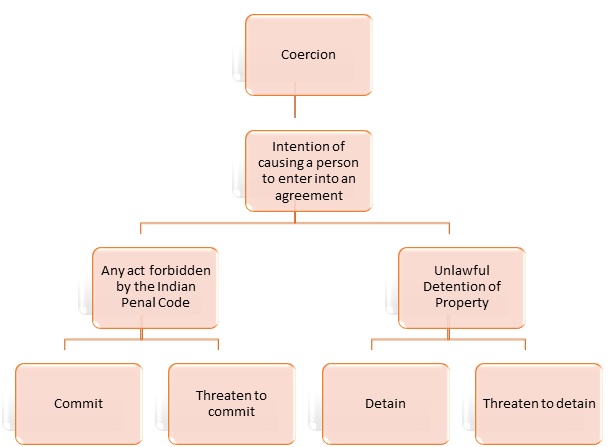The Essence of Section 309 under IPC
After the alleged commission of suicide by the late star actor, the country has been actively participating in sensitizing the importance of mental health. Despite the wide assumption that section 309 has been revoked from the Indian Penal Code (‘IPC’), 1860, it continues to exist.
Section 309 of the Indian Penal Code, 1860 states that,
“Whoever attempts to commit suicide and does any act towards the commission of such offence, shall be punished with simple imprisonment for a term which may extend to one year, or with fine, or with both.”
Defining suicide
Interestingly, the term ‘suicide’ has not been defined in the provisions under IPC. However, in the case of Clift v. Schwabe[1] the definition of the phrase ‘to commit suicide’ was deliberated upon in great depth. The expression was interpreted as any person who voluntarily does an act (or refrains from the protection of their body), with the intention to destroy his own life, with the knowledge of the consequences of the act and at the time of such commission was not of unsound mind (sufficient to will the destruction of his own life). The emphasis, thus, can be laid on the following words,
- Will/Consent,
- Intention,
- Voluntary act,
- Being conscious of the consequences,
- Destruction of own life, and
- Knowledge.
This definition implies that a person who is severely depressed and has lost all hopes from himself and his life and he tries to kill himself, say, by sectioning his nerve shall be punished if his attempt fails. Such punishment can be met out in terms of imprisonment, fine or even both.
Ingredients of Section 309
The most important ingredient of this section is the willingness to end one’s own life. The person should have the intention and the knowledge that the act will end his/her life. For instance, in a case where a woman, in order to escape the beating of her husband, tried to jump into a well along with her child, it was not considered as an attempt to suicide since the intention of the women was not to end her life but to escape or avoid the beating of her husband.[2]
An important aspect to be scrutinized is the establishment of enough evidence to prove that a particular act constitutes an attempt to suicide. For instance, if a person who was saved from drowning, denies jumping into the well on her own, she can’t be punished under section 309 upon a mere presumption that it was due to her issues in life and bad health. Though the women claimed that she was not in the right state of mind due to the health problems she was facing, the Session Court denied her request for defence under section 84 of IPC (Act committed by a person of unsound mind). Later, the High Court stated that merely presuming that she committed suicide would not make her liable under section 309, the benefit of the doubt can be not given to her on this presumption.[3] Moreover, it was held that suspicion however strong cannot be considered proof.[4]
Another essential facet of this provision is that voluntary termination of life is no excuse under this section. A man claiming that he has led his life contently and now wishes to happily end it is cannot be justified under this section. Such a situation if found before the person’s death, shall be considered as an attempt to suicide, without any exception. The Court has held that there is no distinction between suicide as ordinarily understood by society and the voluntary action of ending one’s life.[5]
The last important aspect/ingredient that constitutes an attempt to suicide is the commission of such an act shall not be completed i.e. an attempt is punished under IPC and not the completion of the commission of the act.
There have been various judgments that have timely raised questions on the constitutional validity of section 309. The Supreme Court in the case of P Rathinam v UOI,[6] while deciding on the constitutional validity of Section 309 observed that under article 21 the 'right not to' of every right is included under this article, for example, the right to speak includes right to not speak, therefore, the right to live under article 21 is interpreted to include the right to not live. This judgment declared that section 309 is unconstitutional. This decision was subsequently reversed in the case of Gian Kaur v State of Punjab [7]and it was held that the analogy applied under the P. Rathinam case was denied and the court clarified that not every right has its 'right not to' under article 21. This judgment also referred to various rationale under Airedale N.H.S. Trust v. Bland ((1993) 2 WLR 316), where the court said the right to die is different from euthanasia. The further court distinguished between, the right to die and the right to die with dignity as two different rights. Finally, the court held that the provision for penalizing an attempt to commit suicide is not unconstitutional.
The Mental Healthcare Act, 2017
The rising number of suicide cases in India was an alarming situation, and a need was felt to bring Mental Healthcare Act in line with the United Nations Convention on the Rights of Persons with Disabilities (UNCRPD), 2007. The Mental Healthcare Bill was proposed in 2013 and came into force in 2017. However, after the enforcement of the Mental Healthcare Act 2017, the understanding of S. 309 of IPC required more clarity.
Section 115(1) of The Mental Healthcare Act 2017 states,
“Notwithstanding anything contained in section 309 of the Indian Penal Code any person who attempts to commit suicide shall be presumed, unless proved otherwise, to have severe stress and shall not be tried and punished under the said Code.
(2) The appropriate Government shall have a duty to provide care, treatment and rehabilitation to a person, having severe stress and who attempted to commit suicide, to reduce the risk of recurrence of attempt to commit suicide.”
The Act specifically mentions that every case of suicide shall be presumed to be a result of stress and mental health issue unless it is proved otherwise. And in regards to mental health, the Act understands and acknowledges the brutality of the punishment in such situations as imposed under Section 309 IPC and therefore prescribes treatment instead of imprisonment.
The judiciary is faced with the dilemma of ascertaining the validity of section 309 after the enactment of the Mental Healthcare Act, 2017.
On one hand, attempt to suicide would evoke sympathy (in many cases- empathy) towards the survivor. In cases where suicide is attempted due to stress and mental disorder, it is important to recognize the need for help, counselling and emotional support. The other perspective to the theory justifies the penalizing of the act, by claiming that punishment will deter people from doing the act.
But what has to be evaluated is the reason behind offender’s act. For example, if a murder accused tries to kill himself out of fear of punishment or out of fear of losing his family and friends when they come to know that he is guilty, should be punished. Since he wasn’t trying to end his life but was trying to escape from the punishment for murder.
Another example can be the people who are trained to be a human bomb or to kill themselves in order to complete their terrorist tasks. The presence of such cases provides an argument to certify the validity of section 309 under IPC.
Though the Mental Healthcare Act has defined ‘mental illness’ under section 2, the term ‘severe stress’ remains un-elucidated. Until the legislature expands the scope of mental illness to include severe stress, the term can be variedly misused.
One of the significant aspects is to know that Section 115 does not provide blanket relaxation to the offenders charged under Section 309. At the present stage, what has to be categorically recognized is that the section that punishes attempt to suicide has not been completely removed from IPC instead there are now fewer cases that would invoke section 309. The cases would not involve the incidents where the cause of action was stress and depression. Instead such cases will call attract treatment. This defence is available to the accused until the police finds out that the offender was not suffering from any stress during the commission of the crime during investigation.
This view was justified by the Law Commission of India in its 156th Law Commission Report on the Indian Penal Code. It observed that,
“rise in narcotic drug trafficking offences, terrorism in different part of the country, the phenomenon of human bombs, etc. have led rethinking on the need to keep attempt to commit suicide an offence, and a terrorist of drug trafficker who fails in his/her attempt to consume cyanide pills and the human bomb who fails in the attempt to kill himself or herself along with the target of attack, have to be charged under section 309 and investigations be carried out to prove the offence.”[8]
Conclusion
According to the World Health Organization, 59 countries have decriminalized the attempt to commit suicide. What is observed is that this decriminalization has been relatively late as in common law systems. Though the various Law Commission reports have described the need for effacing the section 309 simply because committing the end of their own life is a dreadful act and the survivors do not need punishment instead sympathy. If punishment would have deterred them, they would not have committed it in the first place, but the fact that they are trying to commit such an act with intention and full knowledge means they need help and not a harsh preventive method. In my opinion such punishments have the capacity to deeply affect the offender (patient) to complete his intention next time.
By,
LawVastutah
[1] 3 Common Bench, 437.
[2] (1940) All 647.
[3] 1976 Cr LJ 1519 (Bom).
[4] AIR 1946 PC 38.
[5] CA Thomas Master v UOI, 2000 Cr LJ 3729 (Ker).
[6] P Rathinam v UOI, 1994 Cr LJ 1605 .
[7] Gian Kaur v State of Punjab, 1994 Cr LJ 1660 (SC)
[8] Law Commission Report No. 156- The Indian Penal Code-Vol 1, available at: https://www.latestlaws.com/library/law-commission-of-india-reports/law-commission-report-no-156-indian-penal-code-vol-1/ (Last Visited on 24 September 2020).




Comments
Post a Comment